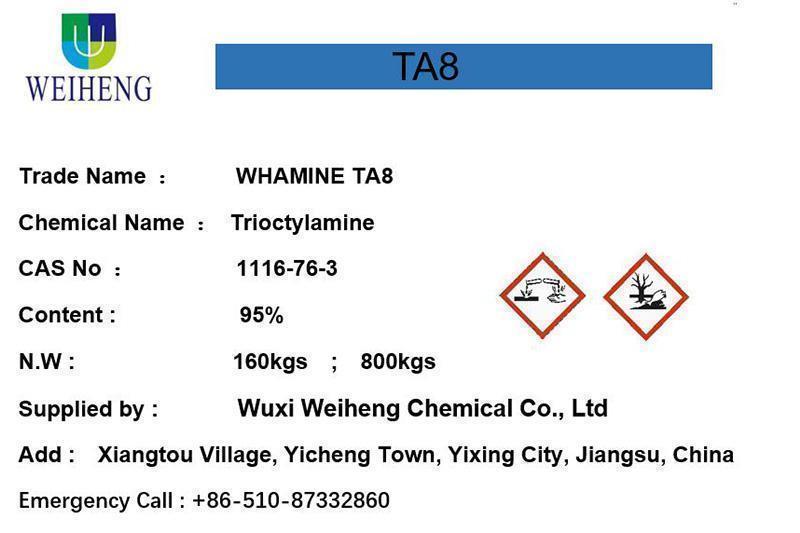Trioctylamine, a compound renowned for its diverse range of applications, has established itself as a crucial component across various industries. This article delves into the chemical characteristics, applications, and significance of trioctylamine in different sectors, highlighting its indispensable role in modern technological advancements.

Chemical Structure and Properties:
Trioctylamine, with its systematic name N,N-Dioctyl-1-octanamine, is a member of the amine class of compounds. Its chemical formula is C24H51N, with a molecular weight of approximately 353.7 g/mol. The compound's structure comprises a hydrophobic octyl chain and an amine functional group. This unique structure imparts a variety of properties that make trioctylamine a versatile compound for various applications.
Solvent Extraction in Hydrometallurgy:
One of the paramount applications of trioctylamine lies in the field of hydrometallurgy. Trioctylamine exhibits an affinity for certain metal ions, particularly rare earth elements. This property makes it a vital component in solvent extraction processes aimed at separating and purifying metals from their ores. Through selective coordination with specific metal ions, trioctylamine enables efficient separation and concentration of valuable metals, contributing to the production of high-purity materials used in electronics, magnets, and catalysis.
Catalysis and Chemical Synthesis:
Trioctylamine's catalytic potential extends to various chemical reactions, encompassing applications in both academia and industrial settings. Its versatile nature allows it to facilitate reactions that involve acid-base catalysis, reductive amination, and Michael addition, among others. In particular, trioctylamine's role as a catalyst in the synthesis of pharmaceutical intermediates underscores its importance in drug development and manufacturing.
Surfactant and Emulsifier in Polymer Industry:
The amphiphilic nature of trioctylamine, stemming from its hydrophobic alkyl chain and hydrophilic amine group, qualifies it as an excellent candidate for use as a surfactant and emulsifier. In the polymer industry, it contributes to the formation of stable emulsions and microemulsions, aiding in the production of polymer dispersions, latexes, and coatings. This enhances the quality and performance of a wide range of polymer-based materials.
Corrosion Inhibition and Lubricant Additive:
Trioctylamine's application portfolio extends to corrosion inhibition and lubrication enhancement. Its ability to adsorb onto metal surfaces forms a protective layer that mitigates corrosion by preventing the interaction between metals and corrosive agents. Furthermore, trioctylamine's incorporation into lubricants improves lubrication efficiency, reducing friction and wear in mechanical systems.
Trioctylamine's multifaceted properties have positioned it as a pivotal compound in numerous industries. Its roles in solvent extraction, catalysis, polymer formulation, corrosion inhibition, and lubrication enhancement underscore its remarkable versatility. As technology continues to advance, trioctylamine's applications are likely to expand further, contributing to the progress and innovation of various sectors. Its unique chemical structure and capabilities make it an indispensable tool in the hands of researchers, engineers, and professionals driving advancements across the scientific and industrial landscape.